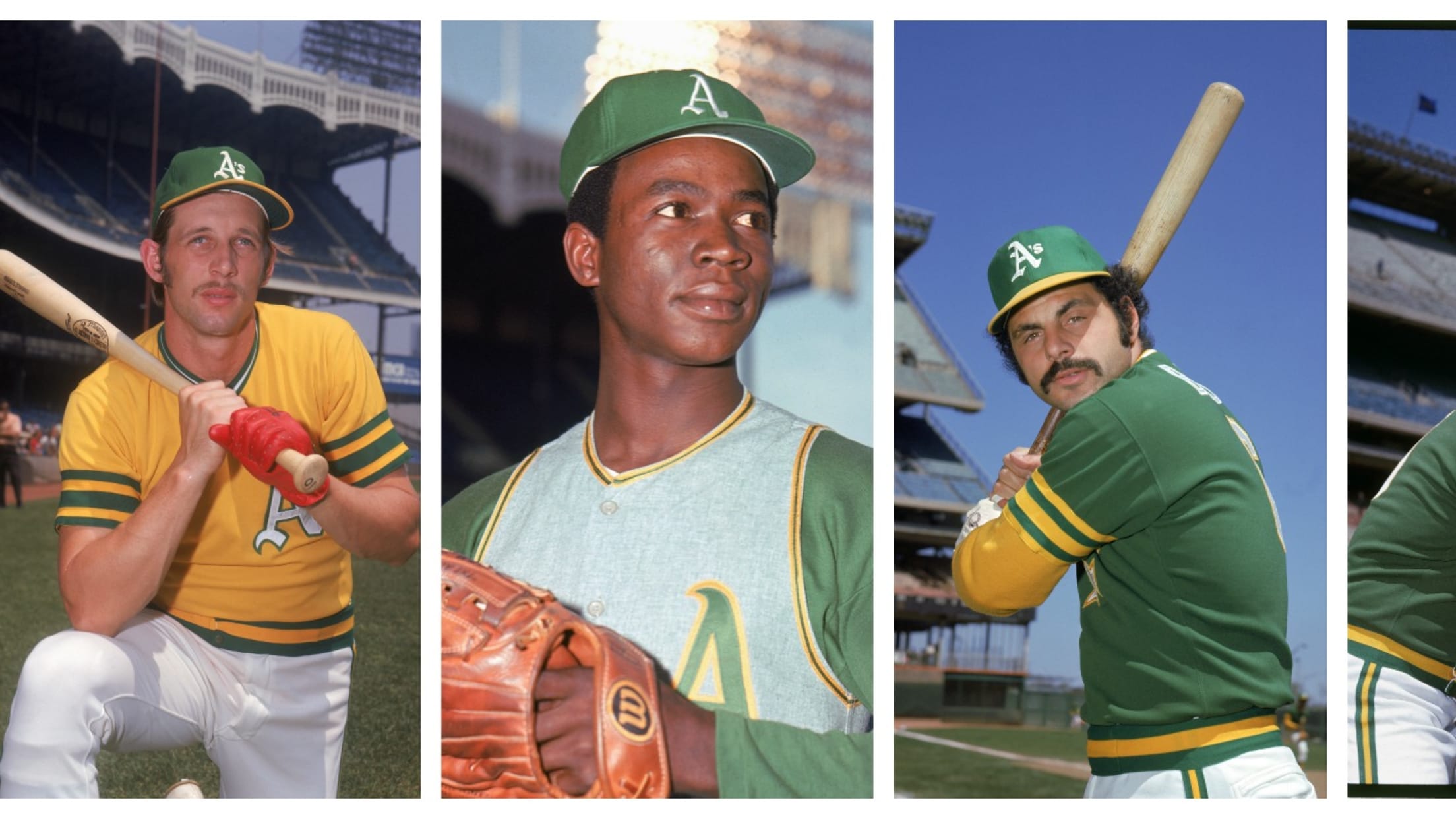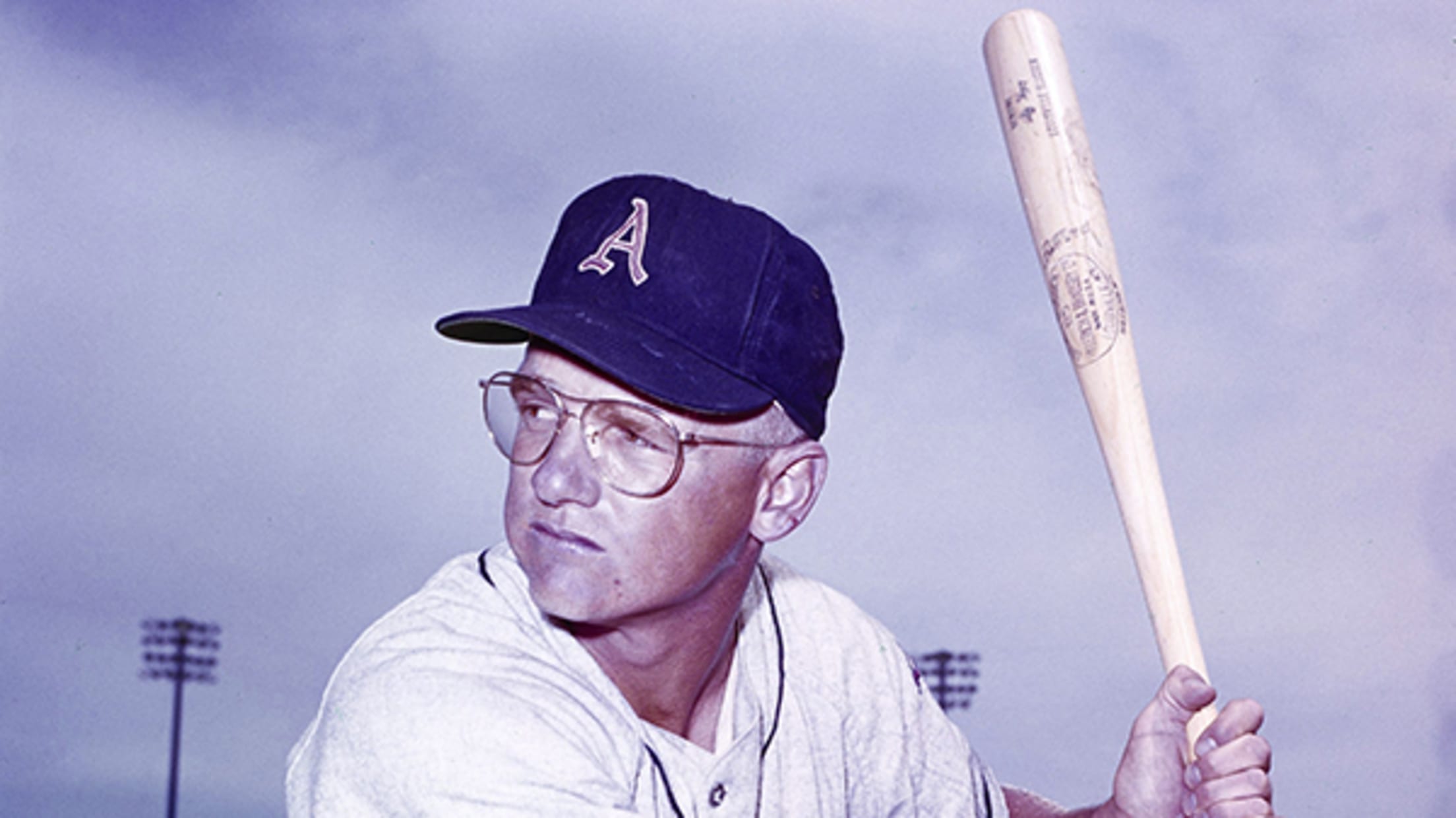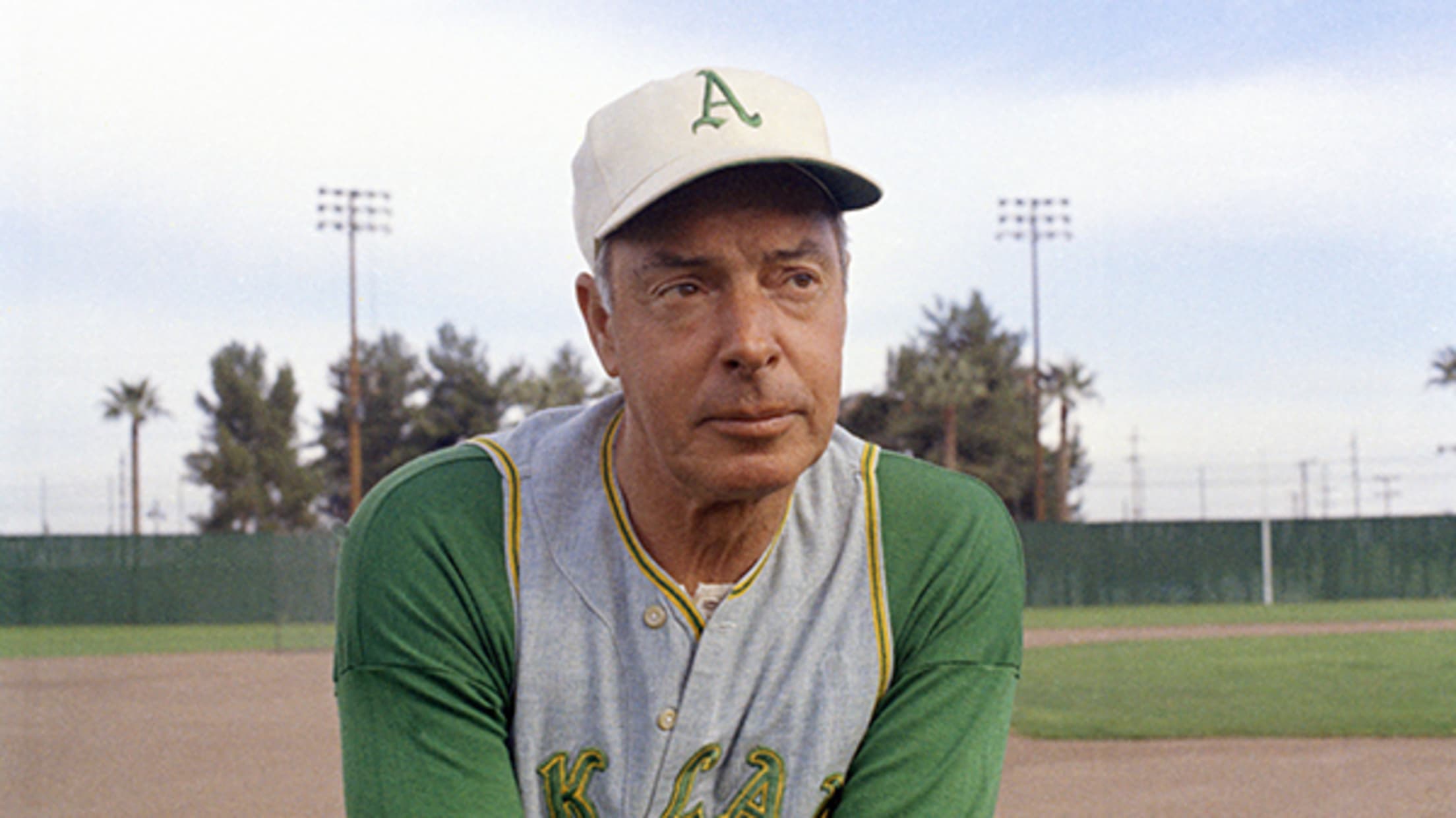Why do the A's wear green? You can thank Charlie Finley

Today, almost every Major League team will take the field decked out in the most beautiful of emerald greens to honor St. Patrick and his ability to drive the snakes out of Ireland and turn beer green. But when St. Patty's Day is over, each of the clubs will revert back to their blues and reds and black-and-yellows. Every club, that is, except the A's.
How did the A's become the lone supporter of the most verdant of shades? That's thanks to Charlie Finley, the team's eccentric/genius/cheap (take your pick) owner from 1960-1980.
Before Finley came on board, the then-Kansas City A's wore baseball's standard blue-and-red combination.

In 1963, that all changed as Finley outfitted the team in glorious gold (Finley said it was the same shade the United States Naval Academy used) and kelly green for the very first time. While the rest of the league would follow suit with a kaleidoscope of color a decade later, it was Finley that was willing to challenge the norms of uniform culture.
(Courtesy Marc Okkonen)
The A's needed special permission from the league to even change the unis under section 1.11 of the rule book -- a section originally drafted in 1886 to ensure consistency in team uniform styles. It stated that the home uniform must be white and the road uniform gray. That wasn't exciting enough for Finley.
Though he was known for his green-and-gold jackets, Finley wasn't making the change just to match his own personal style. As he said before the 1963 season, "There was a time when most of the cars were black, but in modern times, cars are red and blue and green and gold … bright and attractive."
He made sure the official unveiling of the uniforms was an event that would "dazzle and overwhelm the crowd." Even in today's game, where teams have special events to announce uniforms, I'm not sure you'd get a fireworks show complete with green-and-gold balloons that dropped tickets over the baseball faithful.
The colorful uniforms weren't an immediate hit, though. As Dan Daniel noted in the April 27, 1963 issue of The Sporting News, many of the A's players "hated their Finleyized uniforms" and were confident of going back to more "orthodox attire."
Ralph Houk, the manager of the tradition-rich Yankees, liked them even less. "There isn't a single case on record of a club gaining a single notch in the standings because of the screwball uniforms."
Not only were Houk and the A's players wrong, but Finley would actually double down. Sheep, covered in green and gold, appeared beyond the outfield fence. Soon, Finley introduced white caps for the coaches to wear. That included Joe DiMaggio, looking every bit like someone trapped in an alternate reality.

When the A's moved to Oakland, they kept the colors. As other teams began to adopt brighter hues, Finley's A's continued to push the limits: The greens became darker and the yellows (somehow) brighter. They even adopted the pullovers that would define '70s baseball. Depending on when you arrived at the Oakland Coliseum, you might see any combination of green, gold and even plain old white.
Unfortunately, despite the A's holding the title of Major League Baseball's lone green club, they only wore the green tops with green pants for a handful of times in 1973:
Very cool shot of 1973 vintage Reggie Jackson in A's green monochrome uni. pic.twitter.com/o5Sq0fysxj
— Phil Hecken (@PhilHecken) June 13, 2013
Though many of Finley's ideas have now faded away into the annals of baseball history -- there are no more hot pants days, mules named "Charlie O" or orange baseballs filling your broadcast -- the Athletics are synonymous with the green and gold.
When you watch all the green on the field for St. Patricks Day, don't just thank the 1978 Reds for being the first to start the tradition. Thank Charlie Finley for proving, long before the days of alternate jerseys, that fans do want colorful unis.
Additional sources: "Dynastic, Bombastic, Fantastic," by Jason Turbow, Sporting News archives





